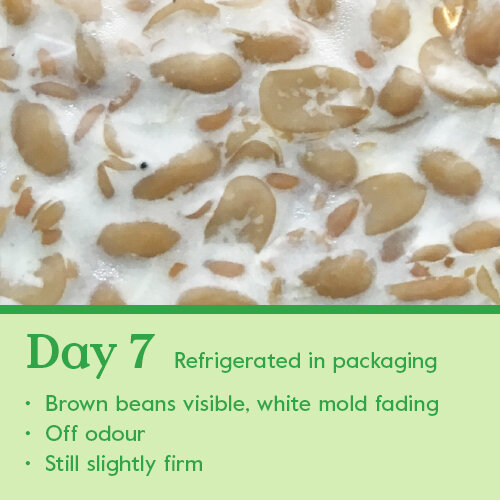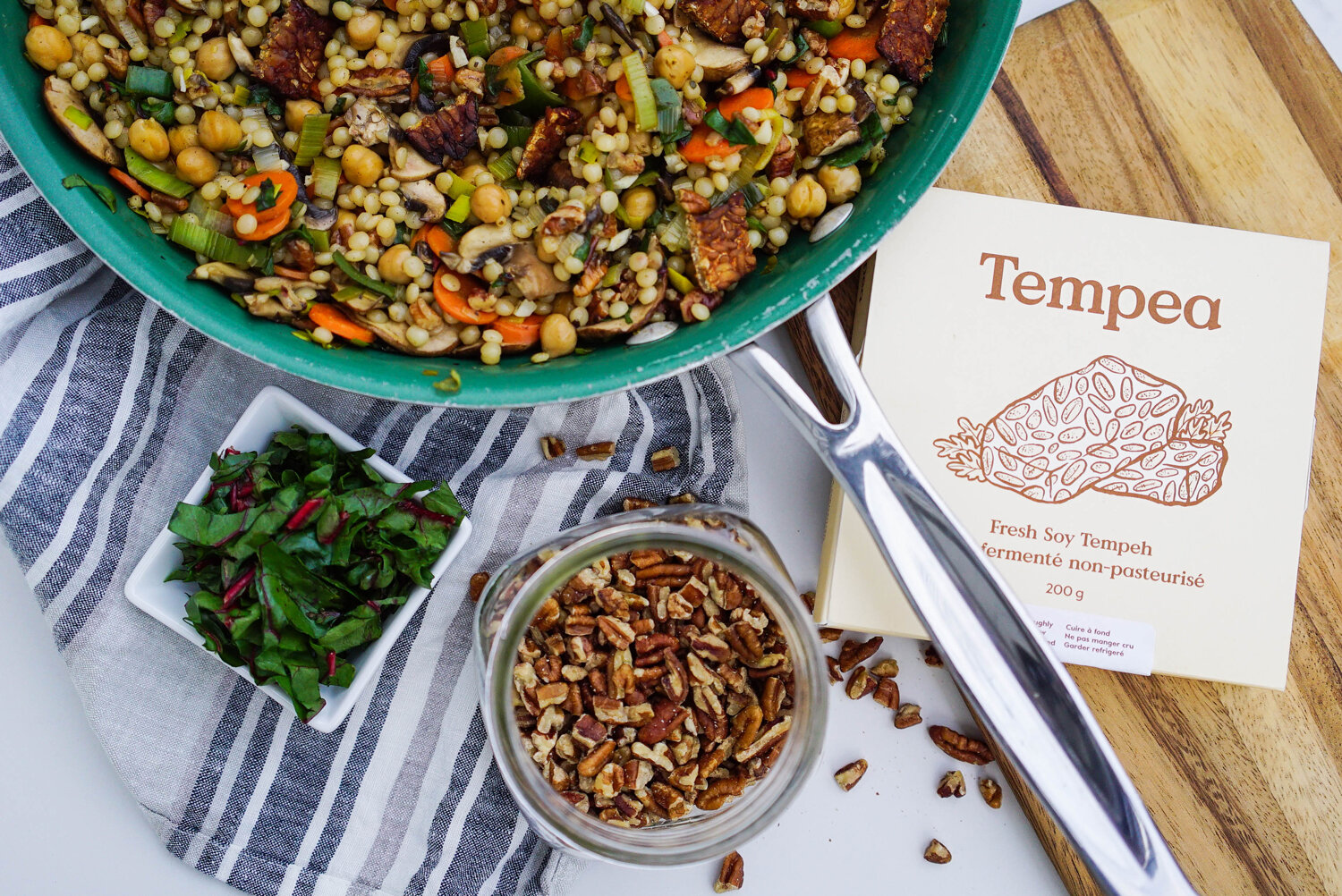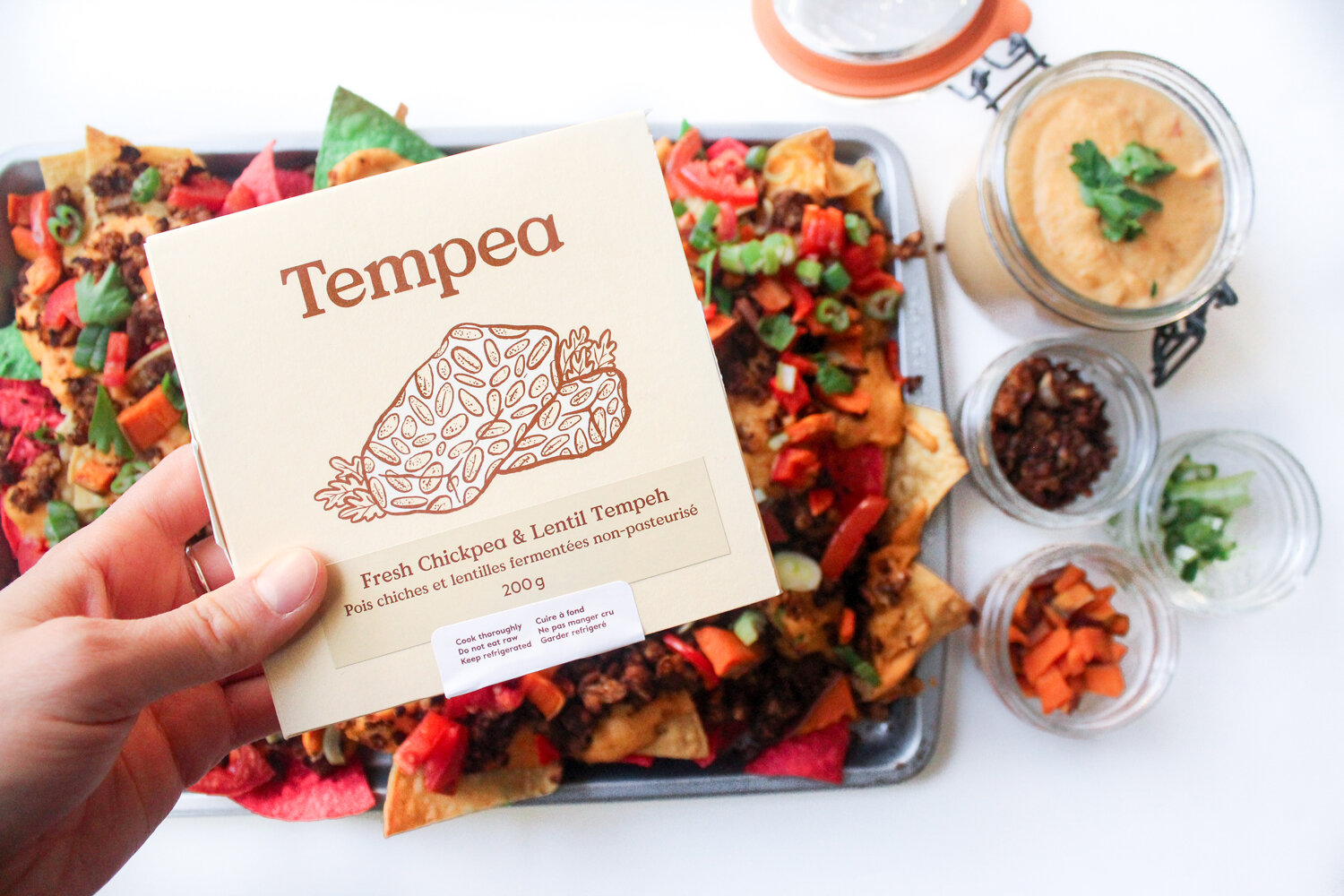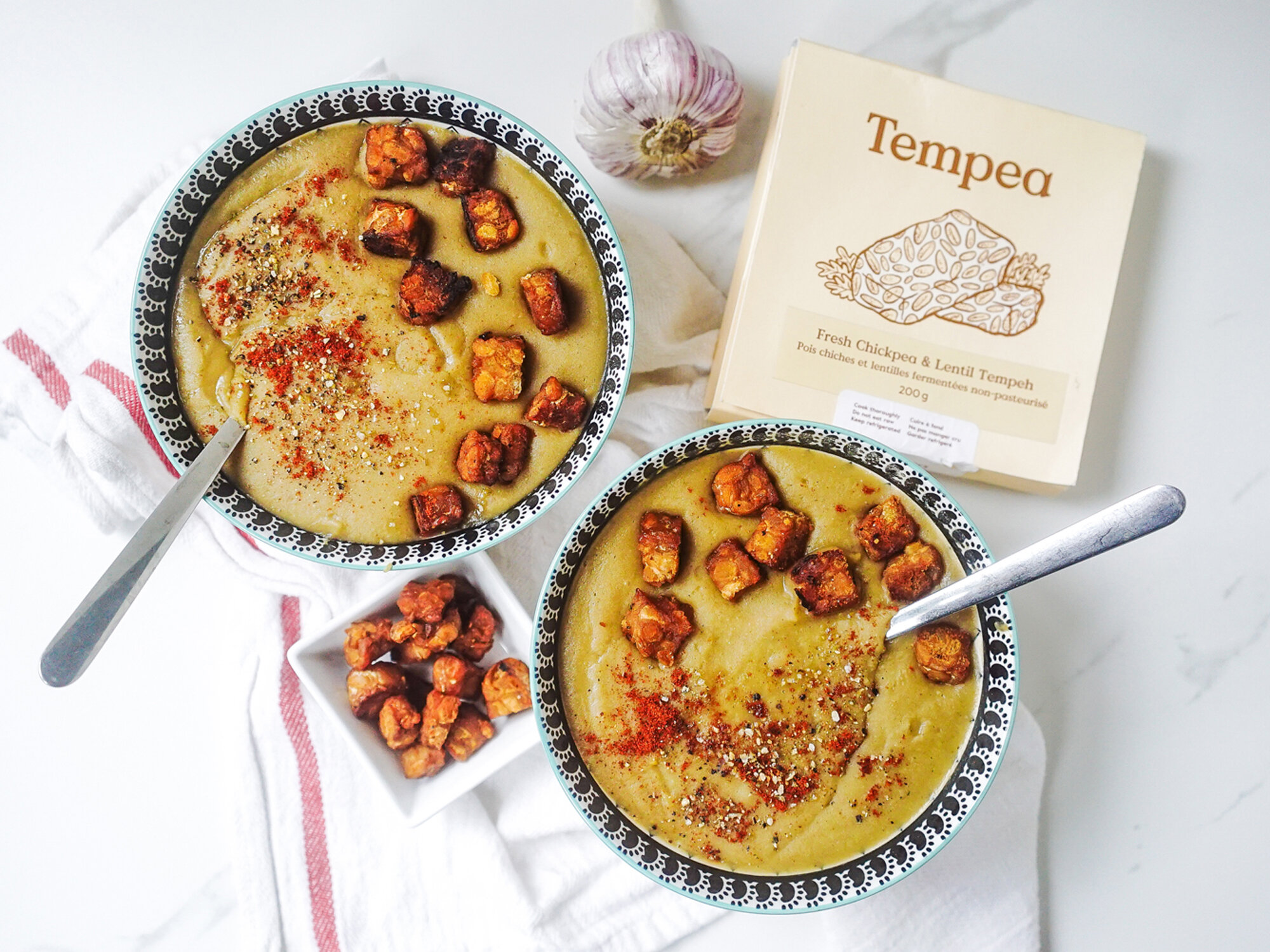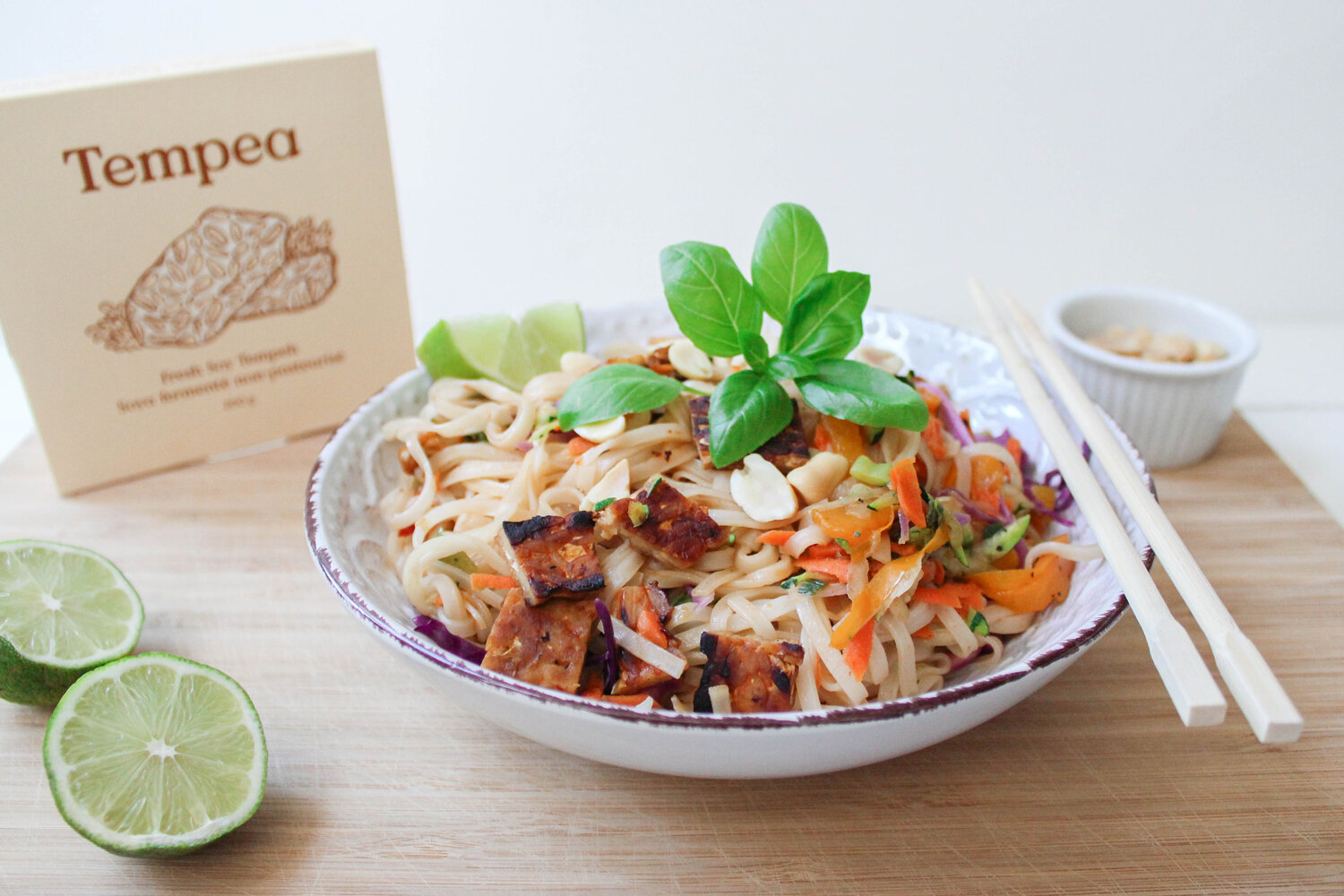TEMPEH 101
Tempeh is a popular food item in Indonesia traditionally made with soy as a staple source of protein. It’s believed to have originated in the Indonesian island of Java many centuries ago and is still enjoyed by the entire population to date.
Unlike most fermented food that’s made with bacteria, tempeh uses a mould culture called Rhizopus. It produces a white outer layer as the mould’s mycelia spreads and grows in and around each soybean. As a result, this network of mycelia is what holds the product together into a patty-like consistency.
In Indonesia, tempeh is traditionally fermented in ambient temperatures (30–31°C for 24–48 hours) while wrapped in banana leaves. Fresh tempeh will have a yeasty, mushroom-like aroma and a mild, nutty flavour. Just like fruits and veggies, fresh tempeh is always best. Because it is a live product, fresh tempeh will continue develop stronger flavours as it matures.
Storage and Handling
The product must be kept refrigerated (1 to 4°C) and is best enjoyed within 5-7 days. During this time, there may be changes in the product’s appearance: the white mould may turn yellowish or have black spots. Because it is a live product, the culture will continue to mature. Black spots appear when the Rhizopus mold creates spores; do not be alarmed, they are safe for consumption! If you are not cooking your tempeh right away, you can also freeze it for 3 months with minimal changes to texture.
We strongly advise against eating raw tempeh. Please cook the product thoroughly and do not eat it raw.
Nutrition
SUPERFOOD! That's what tempeh is since every pack has:
An excellent source of protein
Low in saturated fat
Free of trans fat
Free of cholesterol
Free of sodium
High in fibre
Source of Calcium
Source of Iron
It's also low in FODMAPs if served plain
(may also depend on accompanying ingredients)You can also read more about the health benefits of tempeh in our FAQs too!
COOKING BASICS
Kindly note microwaving is NOT a sufficient method to thoroughly cook our tempeh. Please cook to an internal temperature of 165° F (75° C).
Suggested Uses
Tempeh is an excellent flavour sponge thanks to its porous nature. Unlike tofu, it’s not water-logged so it has a firmer, “meatier” texture. The fermentation process also brings out a lot of savoury and nutty elements that you miss out on in tofu. We highly recommend brining and marinating it for a couple minutes — it doesn’t take long for tempeh to absorb all that flavour!
In general, tempeh loves dry heat so you can’t go wrong with frying, grilling, or baking. You can also add it to your favourite curry, salad, stir-fry, or wrap… Tempea can do it all!
Scroll through our collection of recipes and our social channels for stories from our test kitchen (we never outgrew playing with our food).





